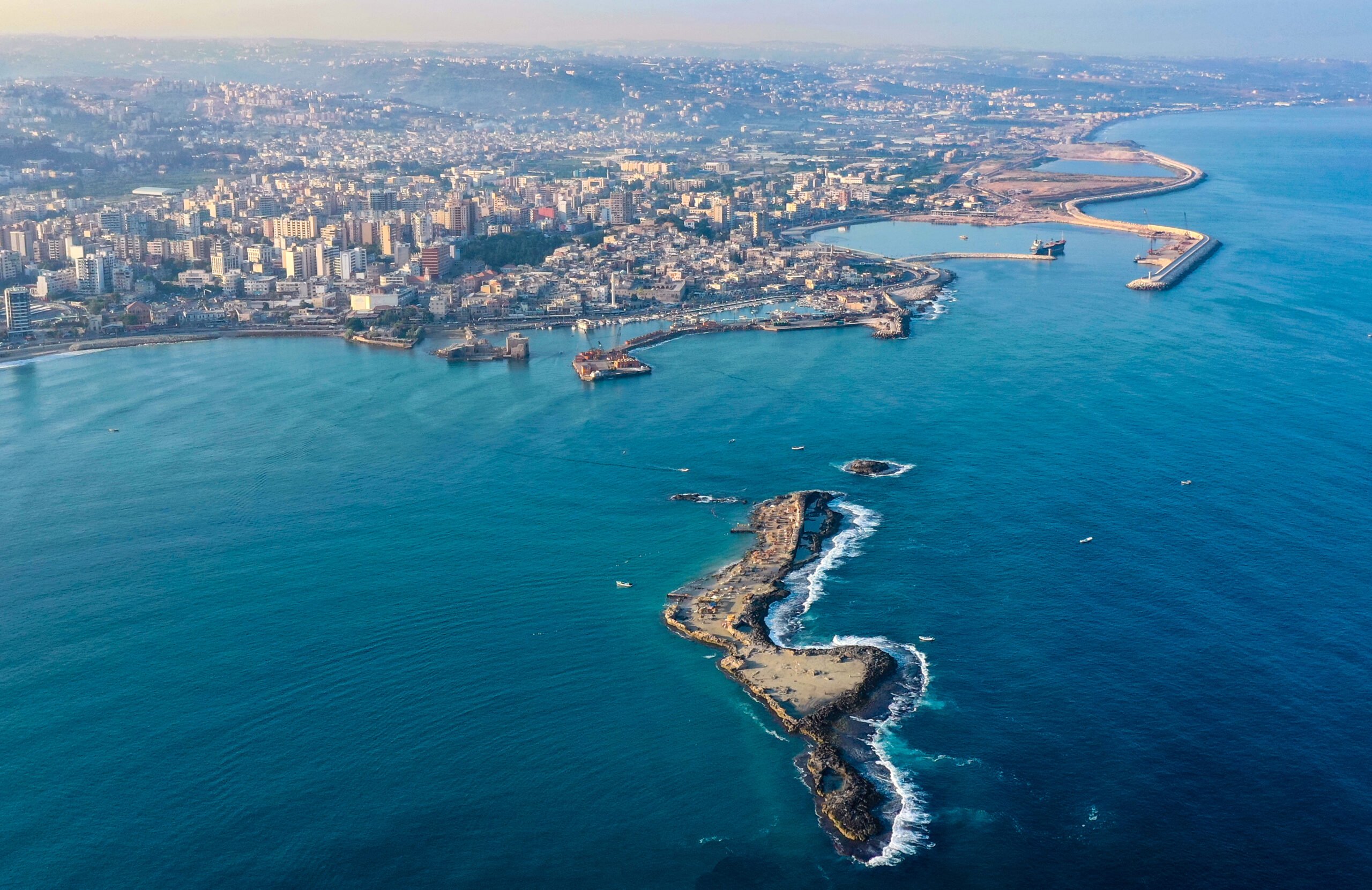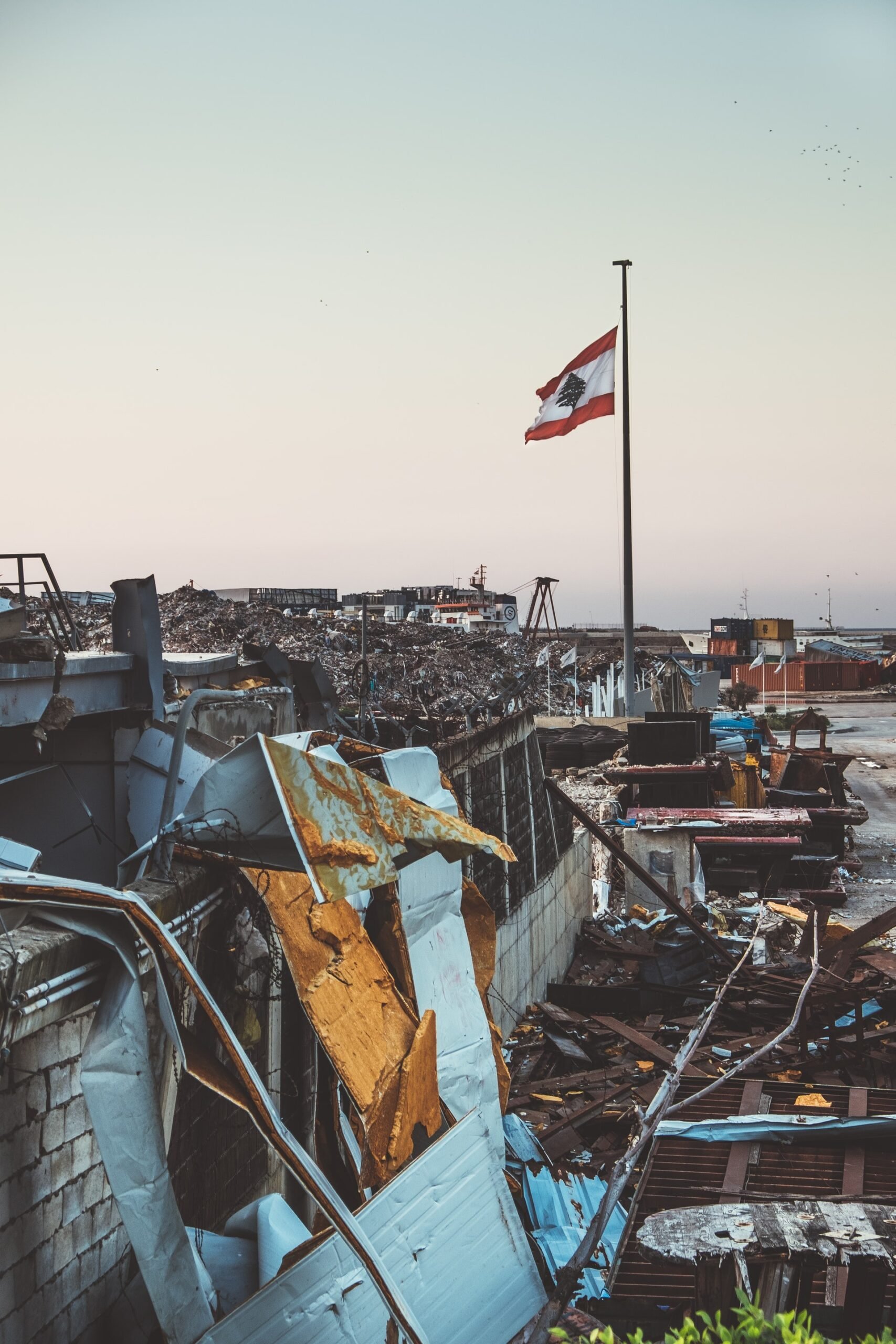
Inefficient water use: network leakages, agricultural waste and unaccounted-for water
Based on the highlighted data relating to water availability, water management, laws and regulation, the challenges in Lebanon’s water sector are myriad. These can be summarized as data inconsistency, outdated and insufficient infrastructure, poorly managed water utilities, high rates of non-revenue water, limited water storage, poor irrigation efficiency and mounting pressures on ground and surface water supplies.[1] These challenges can be attributed to the lack of management and governance in the water sector.
It is also important to note that the lack of reliable data and coordination between the different actors in the water sector poses a serious challenge in regulating and developing the sector.[2] This is one of the issues that was highlighted in the NWSS 2020, which proposed different initiatives to resolve it.
Due to the old infrastructure and networks, it is estimated that network losses amount to around 55% in some regions. These losses, if fixed, could significantly increase water supply.
Water pollution is also a key challenge. The water quality is deteriorating rapidly, and a large proportion of the population is at risk of losing access to safe, clean water.[3] The main sources of pollution are untreated domestic wastewater and agricultural waste (see section 3).
Moreover, water shortages and pollution have put a major strain on the groundwater and led to high exploitation rates, a drop in the groundwater level and pollution of the groundwater resources. Unplanned exploitation from this resource adds to the problem.
Another challenge which is important to highlight is related to the financing of the water sector. The proposed plans in the NWSS 2020 require investment of about $8 billion through to 2035. However, the funding source is not clear (split between international and local funding). Contingency planning and discussion on how the planning may be impacted by the political and economic crisis is limited.[9]
Also on a financial level, billing in the water sector is still mainly based on a flat rate. This approach brings in insufficient revenue to sustain the regional water establishments, which are mostly in debt.[10]
Internal disputes over water (such as sectoral allocation)
The main disputes over sectoral allocation were highlighted in the Greater Beirut Water Supply Project, which, based on Decree 14522 of 1970, allocated the Litani River water in the Bekaa Valley to the Beirut area (see section 5).[4] [5] This decree is currently being implemented without recent assessment of the changes that have taken place within the basin from a hydrological and water use/demand perspective.
Other water-related disputes are also reported on different basin scales. These concern water allocation between basins (inter-basin transfers).
The political and economic situation can be regarded as the main limitation in developing the water sector. Lebanon is governed according to a sectarian political system that hands out state positions based on religious sect. This gives rise to several challenges, notably slowing the development of the economic system, delaying or stopping any reform attempts, and affecting competition by permitting and authorizing the existence of monopolies.[6]
At the same time, water projects in Lebanon are beholden to this system, regardless of the need or priority as long as they are fulfilling a political purpose.[6] For example, the construction of dams in North Lebanon has to be balanced with a project in South Lebanon (Conveyor 800).[6]
Moreover, on the economic level, the regional water establishments often report a huge financial loss, which limits their ability to finance projects. With Lebanon’s current economic crisis, all water establishments have reported a further decrease in fee collections, which are also worth less because of devaluation of the Lebanese pound.

Salaries and fees (tariffs) remain in the local currency, while maintenance and repairs are in US dollars. This implies that the tariff structure presented in the NWSS 2020 has become useless.[7]
Public awareness and education campaigns
The Ministry of Energy and Water develops limited public awareness campaigns to protect the country’s water resources. However, some campaigns are implemented through projects run by international NGOs.
One government initiative that was launched was the cleaning of the Litani River, which was based on Law no. 63 of 2016. This law allocates funds to projects aimed at cleaning the river and improving the water quality. A total of 1.1 trillion Lebanese pounds (equivalent to $800 million) is to be secured through grants, loans and government treasury for the initiative. The projects target five sectors: governance; domestic wastewater; solid waste; industrial waste; and pollution from agriculture. As part of this initiative, around 3 billion Lebanese pounds were allocated to public awareness campaigns to be led by the Litani River Authority.[8]
[1] USAID (US Agency for International Development), 2017. USAID Water and Development Country Plan for Lebanon. Beirut, Lebanon.
[2] MoEW (Ministry of Energy and Water), 2020. National Water Sector Strategy Update 2020.
[3] UNICEF, 2021. Water supply systems on the verge of collapse in Lebanon: over 71 per cent of people risk losing access to water. Press release published on 23 July 2021.
[4] The Water Institute, 2011. Greater Beirut Water Supply Project: Independent Technical Review of Source Water Quantity.
[5] LRA (Litani River Authority), n.d. Decree 14522 from 16 May 1970.
[6] Gharios, G, Farajalla, N and El Hajj, R, 2021. ‘Challenges of post-war policy reforms in Lebanon’s water sector – lessons learned.’ Water Supply 21(7): 3672-3684.
[7] Eid-Sabbagh, K and Ray, A, 2021. Breaking Point: The Collapse of Lebanon’s Water Sector. Policy Paper. Triangle.
[8] MTV Lebanon Channel, 2018. Tahkik, Season 12, episode 2, Sewer of Corruption, (تحقيق الموسم ١٢- مجرور الفساد).
[9] ECODIT et al., 2015. Strategic Environmental Assessment for the New Water Sector Strategy for Lebanon. Deliverable 4. Final SEA report.
[10] MoE (Ministry of Environment), 2020. Lebanon State of the Environment and Future Outlook: Turning the Crises into Opportunities (SoER 2020). With UNHCR, UNICEF and UNDP.
